Common Board Features
- Support for Core i7 LGA1366 CPUs at 4.8-6.4GT/s QPI
- Intel X58 northbridge and ICH10R southbridge
- Six 1.5V DDR3 DIMM slots supporting up to 24GB of memory
- Realtek RTL8111D Gigabit Ethernet
- One PCI-Express x4 slot (open ended)
- One PCI-EXpress x1 slot
- Two PCI slots
- Six ICH10R SATA 3Gbps ports supporting Intel Matrix RAID 0, 1, 10, 5 and JBOD
- Two Gigabyte (JMicron) SATA 3Gbps ports supporting RAID 0, 1 and JBOD
- One IDE port supporting two devices
- One floppy connector
- Twelve USB 2.0 ports - eight on rear I/O, four via pin-outs
- Texas Instruments IEEE1394a Firewire supporting three ports - two via pin-outs, one on the rear I/O
GA-EX58-DS4 Unique Features
- Three PCI-Express 2.0 x16 slots locked to x16, x8, x8 respectively
- ATI CrossFireX support
- Realtek ALC888 7.1 channel High-Definition audio codec
GA-EX58-UD4P Unique Features
- Three PCI-Express 2.0 x16 slots x16, x16/x8, x8
- ATI CrossFireX and Nvidia SLI support
- Realtek ALC889a 7.1 channel High-Definition audio codec with Dolby Home Theatre support
Board Layouts
On the face of it, both boards are pretty much identical, but there are some subtle differences. For starters, the SATA layout on the UD4P is much improved compared to the DS4 - all eight on the UD4P face outwards and don't get scuppered up when using multiple graphics cards with dual-slot coolers especially. If you drop in a second long graphics card with a dual-slot cooling solution into the DS4, both the purple sockets (and COM port pin-out) are unusable.
There is plenty of space around the CPU socket - we tried a range of coolers: Noctua, Akasa, Thermalright and Intel's stock LGA1366 cooler and they all fitted perfectly. The cooling array follows the same awesome blue and gunmetal silver style used on the EP45-DS3R we reviewed a while back, although the UD4P has an extra heatpipe to the southbridge where the DS4 doesn't. Apart from a couple of colour changes between the two that's about it.
Underneath is where the party starts though. Where both boards use a virtual 12+2 power phase design for CPU and QPI, the DS4 uses three traditional, larger MOSFETs to each pair of chokes and single driver IC, whereas the UD4P uses four of the newer PowerPAK MOSFETs per pair of chokes and single driver. Because the power density is higher for the MOSFETs on the UD4P, this also means the two phases for the QPI power get their own mini-heatsink too.

MSI MPG Velox 100R Chassis Review
October 14 2021 | 15:04


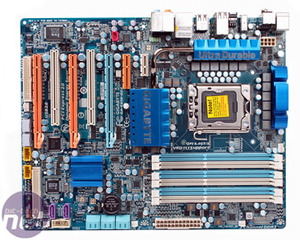
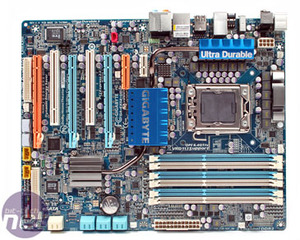
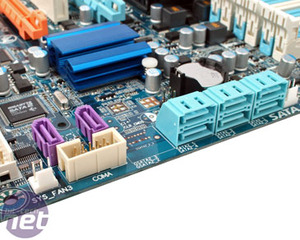
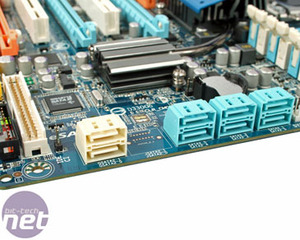
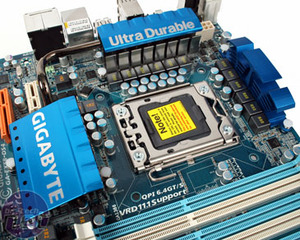
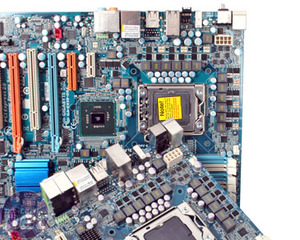







Want to comment? Please log in.